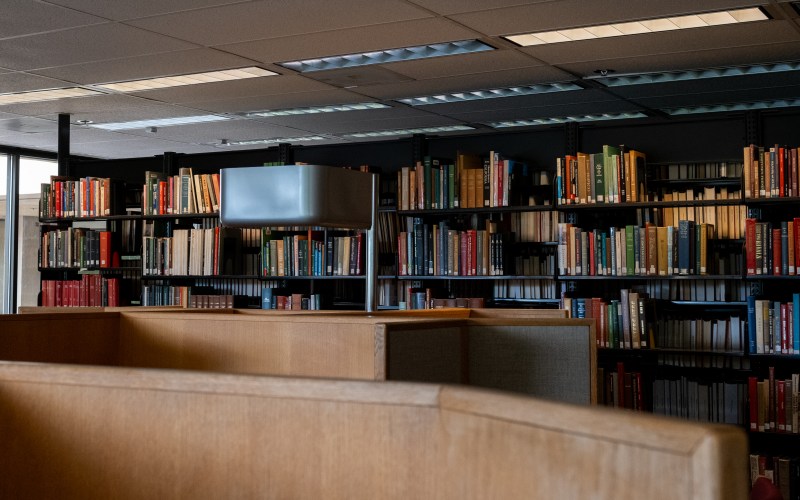Editor’s Note: This article is a review and includes subjective opinions, thoughts and critiques.
On my way to study in Green Library’s Lane Reading Room, I was suddenly struck by a portrait of a woman in an industrial kitchen, staring at me. An object label next to it reads: “Teresa.” As a regular at Green, I questioned how I had never seen this artwork — or noticed that the library even had art — before.
After a little sleuthing, I discovered “Teresa” is a part of an exhibit entitled “Seeing Silicon Valley,” on display at Hohbach Hall, the East Wing of Green Library. The exhibit is a selection from the photography book of the same name, created by photographer Mary Beth Meehan in tandem with Stanford Professor of Communication Fred Turner.
The original photography book captured the lives of those who struggle financially in Silicon Valley, an area known for its economic prosperity and technological innovation. Teresa is one of many essential workers in Silicon Valley, operating a food truck that serves the entire Bay Area, including Stanford itself. We see her in a full-body portrait, with the tubs of empty guacamole and salsa containers towering in the back.
Teresa’s expression is complex. I initially saw it as hardened but, the more I stare, I see pride, tiredness, inquisitiveness. The object label explains, after a long shift, she returns to an apartment that she shares with her four daughters. I found myself contemplating the times I’ve walked past this picture without acknowledging Teresa’s story, oblivious of the work that drives Silicon Valley.
While I appreciate the integration of an art exhibit into a library, the placements of some of the other photographs accidently contribute to this motif of ignoring these workers. Venturing toward the presentation room, a series of “Seeing Silicon Valley” portraits adorn the wall, but they are partially covered by the library’s collection of desktop monitors.
One of these slightly obscured photos, “Abraham & Brenda,” caught my eye. A close-up of a couple embracing each other, but both focused toward the viewer. Abraham and Brenda pose in front of their trailer that they park outside of Stanford’s campus.
Their expression of love toward each other is raw, a tight clasp between them that shines as both protective and reassuring. “Abraham & Brenda” spotlights the ways love beams through, even through hardship. With their entwined figures casting shadows against their trailer, Meehan’s photography masterfully catches the couple’s financial reality.
While most of the portraits center their subjects, “Cristobal” pushes its titular character toward the back, nested in a small shed painted with bright pinks and greens. Cristobal, a full-time security officer at Meta, is only able to afford this shed located in someone’s backyard in Mountain View, reads the object label.
The viewer can see the entirety of the shed in the frame, with Cristobal posing inside with his hands in front of his body, making him look as small as the shed. A wave of deep sadness flowed over me; there is almost no way to reconcile this deep socioeconomic inequality that pervades the region we all currently inhabit and benefit from.
“Cristobal” is another portrait that is slightly covered by computer monitors. Poignantly, the person working right in front of “Cristobal” had a product from the same company that Cristobal works for, Instagram, open on the screen. In a way, “Seeing Silicon Valley” expresses its theme too well, as students ignore the lives of these workers even as their portraits tower over them.
This exhibit is long-term, set to stay up until 2025. Next time you’re at Green, take the time to look and read their stories — they are complicated and thought-provoking, a true reflection of our positionality on campus.
